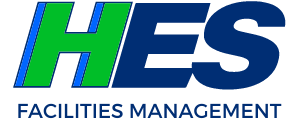In facilities management, key performance indicators (KPIs) reveal not just whether your facilities team is performing up to expectations, but exactly how. The right KPIs allow your provider to recognize patterns – areas of success as well as needs for improvement – and adjust your program accordingly. Over time, your provider can use KPIs to build plans for continuous improvement year-over-year.
You should always feel comfortable asking your facilities management team to share the primary KPIs for your program, including how the KPIs have changed over time. If you find your facilities provider isn’t leveraging KPI results for continuous improvement, you can share the list below to help get them back on track.
Are KPIs different than metrics?
Yes! This is a common question, and one we’re happy to explain. Basically, a key performance indicator is tied to the goals you’ve agreed on with your facilities provider, measuring performance over time. A metric, on the other hand, is the data related to job performance but without the context of a goal.
For instance, work order completion times are an important metric. But if your work order completion data isn’t connected to a goal, you have just half the picture. It’s the goal that makes the data relevant.
Using the work order completion time example, the metric might indicate a work order completion time of 48 hours. By itself, that metric lacks the necessary details and context for action. Is that too slow or are we way ahead of schedule? The KPI will break down the metric into measurable segments. Additionally, you can have multiple KPIs for the same metric; emergency work orders require a faster completion time than preventative maintenance work orders, for example.
What can KPIs do for your educational institution?
With the right KPIs in place, your facilities management team can:
- Help keep your facilities program aligned with your school’s financial goals
- Improve cost-efficiency and program effectiveness over time
- Identify safety or compliance issues, as well as processes that could be contributing
- Track employee performance and coaching or training opportunities
- Provide insight into equipment repair/replacement and future spending needs
- Show long-term successes
- Plan steady program improvements and progressively higher standards
What are the most useful KPIs?
Of course, there are tons of KPIs that can help improve your school’s facilities program, but only if they follow the S.M.A.R.T. system of goal setting. The KPIs must be:
- Specific
- Measurable
- Attainable
- Relevant
- Time-Bound
Below are some of the most useful and fundamental, giving you a foundation that can be added onto depending on your institution’s unique needs.
Preventive maintenance versus emergency maintenance
It goes without saying that preventive maintenance is better for educational institutions than emergency maintenance. Preventive maintenance avoids the cost and schedule disruption that typically come with emergency maintenance, as well as the disruption to daily workloads.
This ratio allows you to see if your organization is under-investing in preventive maintenance, thus creating a larger problem with emergency repairs. Conversely, a little digging might reveal a preventive maintenance plan that’s not being completed on time due to staffing levels or other needed adjustments.
Utility costs per square foot
With students and their families showing steady interest in sustainability, schools have a vested interest in showing how and where they’re reducing energy use. By tracking the utility costs per square foot in your facilities, you can show exactly where you’re conserving energy.
This KPI is also an excellent way to identify and address inefficiencies in HVAC systems, lighting, or water use. A facilities team that’s on top of this one can save substantial amounts of money for your organization by identifying and upgrading inefficient or outdated equipment.
Work order completion times
Increasingly long times between work order creation and resolution – especially when measured against annual goals and past performance – can signal issues you might otherwise miss. This is a great KPI for answering questions like:
- Are there workplace processes that could be streamlined or eliminated for better efficiency?
- Is there a particular task that takes longer, and could team training help resolve this?
- Has the facilities workload increased unexpectedly (for instance, due to urgent COVID-related measures)?
- Are there seasonal issues affecting productivity (such as severe winter weather or hurricane season)?
- Have spending concerns delayed the purchase of necessary equipment?
It could even be as simple as spotty Wi-Fi in certain areas of campus that can affect your facilities team’s ability to access your CMMS. Whatever the obstacles might be, with this KPI in your facilities program, you can get a clearer view of necessary improvements.
Customer satisfaction rates
When you work with a contracted facilities partner, you’re trusting them to blend seamlessly into your campus environment. Customer satisfaction rates identify patterns in your facilities team’s work on campus and helps create a safer, healthier, more comfortable learning environment for everyone.
While this KPI measures your facilities partner’s ability to adapt to your campus culture, it’s also a great tool for recognizing service excellence among team members. In addition, it can help identify unmet needs. For example, if complaints or negative survey responses begin to rise, your facilities team can dig into the data to spot service level gaps or process issues you might not have otherwise seen.
Addressing customer satisfaction in an organized, timely manner has a wealth of benefits, too. With more comfortable learning spaces, your students are more engaged, and faculty and staff are more likely to stay with you.
Work with the right facilities management team
Want to know more about how we use key performance indicators to build better facilities programs for our valued customers? Contact us at info@hesfacilities.com.
Disclaimer
The illustrations, instructions, and principles contained in this website are general in scope and for marketing purposes. We assume no responsibility for: managing or controlling customer activities, implementing any recommended measures, or identifying all potential hazards.

